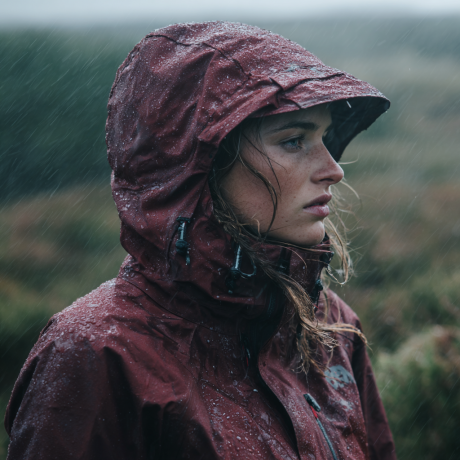please click here:
Introduction
Outdoor exploration has always been part of human curiosity. Whether you're scaling a mountain, camping under the stars, or enjoying a weekend hike, the gear you carry plays a crucial role in both safety and enjoyment. The right outdoor gear is not just about comfort; it is about performance, durability, and the freedom to explore without unnecessary setbacks.
This guide takes you deep into the world of outdoor gear, comparing different categories, highlighting innovations, and exploring how to make informed choices tailored to your adventures.
Why Outdoor Gear Matters
Venturing into nature exposes you to unpredictable weather, rough terrain, and demanding physical challenges. Proper gear provides:
-
Protection from the elements
-
Safety in emergencies
-
Efficiency during long treks
-
Comfort for extended stays outdoors
Investing in quality gear transforms your outdoor experience from survival-focused to enjoyment-driven.
Clothing and Apparel for the Outdoors
Layering System Explained
The foundation of outdoor clothing lies in the layering system. This includes:
-
Base Layer: Moisture-wicking fabrics like merino wool or synthetics
-
Mid Layer: Insulation through fleece or down
-
Outer Layer: Waterproof and windproof shells for harsh conditions
Fabrics Compared
| Fabric Type | Advantages | Drawbacks | Best Use Case |
|---|---|---|---|
| Cotton | Comfortable, breathable | Retains moisture, slow drying | Casual outdoor use |
| Merino Wool | Temperature regulation, odor-resistant | Expensive, less durable | Cold-weather hikes |
| Synthetic (Polyester/Nylon) | Quick-dry, durable | Can retain odor | General all-season trekking |
| Down | Extremely warm, lightweight | Loses insulation when wet | High-altitude expeditions |
Choosing the right fabric ensures you remain dry, insulated, and protected across different environments.
Footwear: Boots vs. Trail Shoes
Hiking Boots
-
High ankle support
-
Better stability on rocky terrain
-
Often waterproof
-
Heavier and require breaking in
Trail Shoes
-
Lightweight, flexible, and breathable
-
Faster drying
-
Less support on uneven ground
-
Ideal for short hikes and fastpacking
| Feature | Hiking Boots | Trail Shoes |
|---|---|---|
| Weight | Heavier | Lightweight |
| Durability | Long-lasting | Moderate |
| Comfort | Requires break-in | Comfortable out of box |
| Terrain | Rugged, steep trails | Moderate trails, urban hikes |
Outdoor Shelters: Tents, Hammocks, and Bivvy Sacks
Tents
-
Best all-around shelter
-
Weatherproof and insect-proof
-
Heavier compared to other options
Hammocks
-
Lightweight and compact
-
Keeps you off the ground
-
Requires trees and compatible straps
Bivvy Sacks
-
Minimalist, ultralight choice
-
Excellent for solo expeditions
-
Limited comfort compared to tents
| Shelter Type | Weight | Comfort | Weather Resistance | Best For |
|---|---|---|---|---|
| Tent | Moderate to heavy | High | Excellent | Families, multi-day trips |
| Hammock | Lightweight | Medium | Good with tarp | Backpackers, warm climates |
| Bivvy Sack | Ultralight | Low | Moderate | Solo fastpacking |
Cooking and Hydration Systems
Cooking Gear
-
Backpacking Stoves: Compact and reliable, fueled by gas canisters
-
Liquid Fuel Stoves: Versatile and efficient in cold weather
- Wood-burning Stoves: Sustainable but dependent on fuel availability
Water Purification Options
-
Filters: Reliable for bacteria and protozoa
-
UV Purifiers: Lightweight, works fast but requires batteries
-
Chemical Treatments: Simple but slow and may affect taste
Backpacks and Carrying Systems
Daypacks vs. Multi-day Packs
-
Daypacks: 20–35 liters, lightweight, designed for short trips
-
Multi-day Packs: 50–75 liters, frame-supported, optimized for heavy loads
Key Features to Look For
-
Adjustable suspension system
-
Ventilation panels
-
Hydration reservoir compatibility
-
Multiple compartments for organization
Gadgets and Tools in Outdoor Gear
-
GPS devices vs. Map & Compass: Technology vs. traditional reliability
-
Headlamps with rechargeable batteries vs. disposable batteries
-
Multitools vs. carrying separate knife and repair kit
These small tools can make the difference between inconvenience and preparedness.
Safety Gear and First Aid Essentials
Even experienced adventurers carry first aid kits and emergency equipment. Important inclusions are:
-
Bandages, antiseptics, blister care
-
Emergency blanket
-
Signaling devices like whistles or flares
-
Compact repair kits for gear failures
Trends in Outdoor Gear Innovation
-
Sustainable Materials: Recycled fabrics, eco-friendly production methods
-
Ultralight Design: Gear getting lighter without losing durability
-
Smart Gear: Solar-powered chargers, wearable GPS trackers
-
Custom Fit Technology: Adjustable boots and packs for tailored comfort
Budget vs. Premium Gear
| Gear Category | Budget Option | Premium Option | Key Difference |
|---|---|---|---|
| Tent | Polyester, simple poles | Dyneema, carbon fiber poles | Weight and durability |
| Sleeping Bag | Synthetic insulation | High-quality down | Warmth-to-weight ratio |
| Backpack | Standard foam padding | Ergonomic suspension system | Comfort under heavy load |
| Jacket | Basic waterproof coating | Advanced breathable membranes | Long-term performance |
Budget gear works well for casual users, while premium gear provides reliability in extreme conditions.
How to Choose the Right Outdoor Gear for You
-
Define your activity type: hiking, camping, climbing, or backpacking
-
Consider trip duration: day trips require less gear than multi-day expeditions
-
Balance weight vs. comfort: ultralight gear is efficient, but comfort may be reduced
-
Check climate and terrain: waterproofing and insulation vary depending on environment
Conclusion
Outdoor gear is more than just equipment; it's the key to unlocking adventure safely and comfortably. With innovations in design, materials, and sustainability, there has never been a better time to gear up and step outside. From footwear to shelters, your choices shape your experience. The best gear is the one that aligns with your needs, goals, and environment.
Frequently Asked Questions
1. What is the most essential piece of outdoor gear?
Footwear and weather-appropriate clothing are the most critical since they directly affect comfort and safety.
2. Is ultralight gear worth the investment?
Yes, for long-distance hikers or those who prioritize speed, ultralight gear reduces fatigue. However, casual adventurers may prefer standard gear for durability and comfort.
3. Should I buy premium gear as a beginner?
Not necessarily. Beginners can start with reliable budget-friendly options and upgrade as their experience and outdoor needs grow.
4. How often should I replace outdoor gear?
It depends on usage. For example, boots typically last 500–1000 miles, while tents can last a decade with proper care.
5. What's the best way to maintain outdoor gear?
Clean and dry gear after use, store it properly, and follow manufacturer care instructions to extend its lifespan.
Article Summary
Outdoor gear defines the success of every adventure. This guide explores clothing, footwear, shelters, cooking tools, backpacks, safety kits, and tech innovations, with comparisons of budget vs. premium gear. Learn how to choose equipment that matches your style, comfort, and environment.






